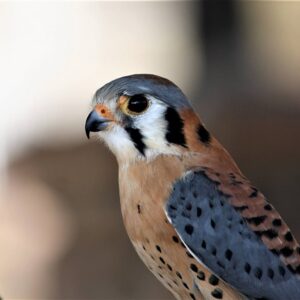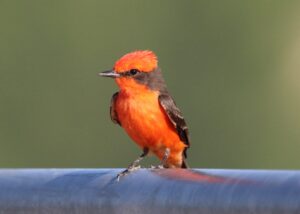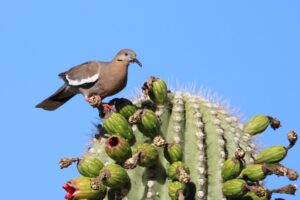Hope grows for return to more birds in flight
The priorities of our Kyrene Corridor neighbors during these blistering summer weeks focus on little more than finding a weekend destination where, if only for a welcome few hours, they can enjoy the pleasures that only Mother Nature can provide. For those so inclined, the possibilities include a trip to watch the graceful glide of a bird soaring overhead, a terrific way to bring about a connection to nature and enhance one’s quality of life. Yet recent studies have found that wild bird populations in the continental U.S. and Canada have declined by almost 30 percent since 1970.

Tice Supplee, director of bird conservation for Audubon Southwest, termed these statistics distressing, but noted there arc abundant opportunities for bringing birds back. The study’s statistics are based on two major efforts by the National Audubon Society over the past 100 years, with information gathered by volunteer birdwatchers during the yearly events. The first is the yearly Bird Count, which will be coming up again this year from Dec. 14 to Jan. 5. It’s the nation’s longest-running community science bird project that fuels Audubon’s work throughout the year. The second is the North American Breeding Bird Survey, initialed in 1966 when synthetic chemical pest control usage began as a way to monitor bird populations over large geographic areas.
Each year thousands of citizen scientists collect data on bird routes throughout our area and the rest of North America, allowing Audubon to better understand bird population changes and manage them. She said we all need to pay attention to the information gathered.

“I find some of these statistics a little startling,” Supplee said. “I’ve lived in the Southwest since the ‘70s and we’re really experiencing a changing landscape.” She said the major contributors to bird decline in Arizona include urbanization, loss of agricultural land and decline of family farms. There are also fewer hedgerows (plantings of dense vegetation along the edges of agricultural fields that offer warmth), protection and a place 10 nest for birds, butterflies, bats and other species.
Additionally, birds run into problems when encountering power lines and plate glass windows in new houses instead of window panes that old houses had. Birds are injured, in some cases fatally,. by striking the windows. Supplee said some people have done a few things right, though. For example, the number of bald eagles has increased with the banning of DDT. She recommends people become involved and encourage others to pay allention to what’s happening with the bird population decline. Residents can plant native plants in their yards and refuse to use pesticides. Birds eat insects and pesticides that can be deadly. Arizona’s many years of drought have been a factor for bird decline as well, but this past winter had more hospitable, moist weather.

“Our desert birds are clever, Supplee said. “They will nest more than one time in good wet weather. In a drought, they may not nest at all.” Charles Huff’, an avid bird photographer in a nearby Valley community, said keeping the bird population healthy is an important goal for future generations. “As a child I was always interested in nature,”. Huff said. “(I remember wailing for flocks of birds that would pass through the fields each spring. As I’ve gotten older, I have cultivated a deeper appreciation for all manner of animals, and find photographing birds not only a challenge, but for me, it’s a sport. Locating them, positioning myself to get a decent shot with proper lighting, waiting for the right second to press the shutter—it’s just a great activity for anyone with a little time and patience.” Supplee recommends checking out the Audubon site for home garden for events and bird walks at southwest.audubon.org/events.
Additionally, Bird Migration Explorer is an interesting guide to the heroic annual journeys made by over 450 bird species, and the challenges they face along the way. Visit explorer.audubon.org/home.


